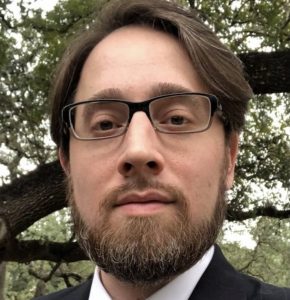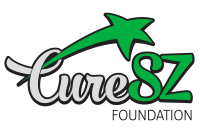
Eric Smith, mental health advocate, consultant for Treatment Advocacy Center, and graduate student studying social work
My journey to a successful, productive life was not easy. For years, I struggled with psychosis which did not respond to any medication I tried, though I tried many. Thankfully, I recovered on the underutilized medication clozapine in 2012. Looking back, I doubt I would have ever begun clozapine if not for a program called Assisted Outpatient Treatment (AOT).
AOT is not just a program or a law. I see it as a lifeline to escaping the confines of insanity for many people. AOT involves the combined teamwork of a judge, psychiatrist, social worker, nurse, attorney, and others as part of a treatment team. Exactly who and what comprises an AOT treatment team can vary from one city to another, but my treatment team had all of those people and professions involved. AOT is beneficial for people diagnosed with schizophrenia, schizoaffective disorder, bipolar disorder, and other related disorders.
My AOT treatment team cognitively and behaviorally changed my view of treating mental illness by taking an authentic and active interest in my sanity. They did not treat me like a lost cause, as I had been treated before.
I highlight this point because those of us with severe mental illness are often treated as a lost cause to be swept under the rug on which society lives so that we are out of sight and mind. Truthfully, there were plenty of times where I, too, thought my sanity was a lost cause. I underwent years of failed medication regimens. AOT helped me realize that not only is sanity something I could regain, but also a foundation on which I could build a happy and purposeful life.
No discussion about AOT is complete without mentioning how it intentionally does not criminalize mental illness. The criminal justice system is not designed to treat and remedy matters of mental illness, nor should it be. The fact that AOT relies on civil (non-criminal) court proceedings is essential. Civil AOT hearings are not only different from criminal hearings by name, they are also different in how they look and feel.
Most people have a general idea about what a courtroom looks like, with a judge sitting in an elevated position in a black robe at the front of the room, and places for a plaintiff and a defendant to state their cases. My AOT hearings were nothing like this. The first thing I ran into when showing up for my AOT hearings was a waiting room where I would sit with others who were there for their hearings. In this waiting room were donuts, muffins, orange juice, and other snacks neatly placed out on a table for us to eat and drink at no cost to us. When called upon to take part in the AOT hearings I entered a conference room, not a courtroom. In that conference room was my treatment team, ready to have a civil conversation with me about how I was doing. I know some AOT hearings around the United States are actually held in courtrooms, and I imagine they are effective even if they are in a courtroom. That said, my treatment team purposefully distanced the AOT hearings from looking like a criminal courtroom. That meant the world to me, and it still does.
I believe AOT is a testament to the power of teamwork across various professions, and this multipronged approach makes sense given the complex nature of issues stemming from severe mental illness.
AOT (and clozapine, which I eventually arrived at with thanks to AOT) has afforded me the opportunity to thrive in reality. As a graduate student, I cannot think of a better way to spend my life than helping others of the diagnosed population find happiness and hope. Advocating for AOT is among the best ways to make that happen.

